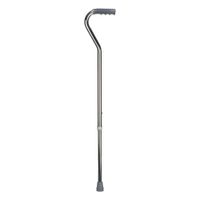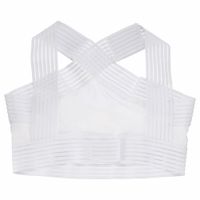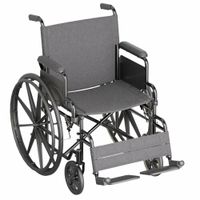Call +(254) 703 030 000 / 751 483 999 / 721 704 777
- Home
- Safety
- Medical Supplies Equipment
- Rehabilitation Durable Medical Equipment
.....Read More
Frequently Asked Questions
What is durable medical equipment (DME)?
Durable Medical Equipment (DME) refers to medical devices and supplies that are designed for repeated use, primarily for medical purposes, and are appropriate for use in the home. These items are typically prescribed by a healthcare provider to assist with a medical condition or disability, aiding in the improvement of a patient's quality of life. DME is characterized by its durability, meaning it can withstand repeated use over a long period.
Common examples of DME include wheelchairs, hospital beds, walkers, crutches, blood sugar monitors, oxygen equipment, and CPAP machines. These items are essential for patients who require assistance with mobility, respiratory support, or other medical needs that can be managed outside of a hospital setting.
To qualify as DME, the equipment must meet specific criteria: it must be durable, used for a medical reason, not typically useful to someone who isn't sick or injured, and appropriate for use in the home. Insurance coverage for DME varies, with Medicare and many private insurers covering a significant portion of the cost, provided the equipment is deemed medically necessary and prescribed by a healthcare provider.
The process of obtaining DME often involves a healthcare provider's assessment, a prescription, and coordination with a supplier who provides the equipment. Patients may need to meet certain criteria or obtain prior authorization from their insurance provider to ensure coverage.
Overall, DME plays a crucial role in patient care, enabling individuals to manage their health conditions effectively at home, reducing the need for prolonged hospital stays, and promoting independence and comfort.
How do I choose the right rehabilitation equipment for my needs?
To choose the right rehabilitation equipment, first assess your specific needs based on your condition or injury. Consult with healthcare professionals like physiotherapists or occupational therapists to get expert advice tailored to your situation. Consider the type of rehabilitation required, such as strength training, mobility improvement, or balance enhancement.
Evaluate the equipment's functionality and ensure it targets the specific areas you need to work on. For instance, if you need to improve leg strength, equipment like resistance bands or leg press machines might be suitable. For balance, consider balance boards or stability balls.
Check the equipment's adjustability and versatility to accommodate your progress and different exercises. Ensure it is user-friendly and safe, with features like non-slip surfaces or adjustable resistance levels.
Consider the space available in your home or facility. Choose equipment that fits comfortably without overcrowding the area. Portable or foldable options can be beneficial for limited spaces.
Budget is another crucial factor. Compare prices and look for equipment that offers good value without compromising quality. Sometimes, renting or buying second-hand equipment can be cost-effective.
Research brands and read reviews to ensure reliability and durability. Opt for equipment with warranties or customer support for added assurance.
Finally, consider your motivation and preferences. Choose equipment that you find engaging and enjoyable to use, as this will encourage consistent use and better rehabilitation outcomes.
What is the difference between a walker and a rollator?
A walker and a rollator are both mobility aids designed to assist individuals with balance and stability issues, but they have distinct differences in design and functionality.
A walker is a basic mobility aid consisting of a lightweight, rigid frame with four legs. It provides support and stability for individuals who need assistance with walking. Walkers typically require the user to lift and move the device forward as they walk, which can be physically demanding. They often have rubber tips on the legs to prevent slipping and may come with wheels on the front legs for easier movement. Walkers are ideal for individuals who need significant support and can manage the physical effort required to lift and move the walker.
A rollator, on the other hand, is a more advanced mobility aid that includes a frame with three or four wheels, handlebars, and a built-in seat. Rollators are equipped with hand brakes for safety and control, allowing users to stop the device easily. The wheels make it easier to maneuver, requiring less physical effort than a walker. The built-in seat provides a convenient resting place, making rollators suitable for individuals who may need to take frequent breaks. Rollators are ideal for those who have some mobility but need additional support and prefer a device that is easier to move and control.
In summary, the primary difference lies in the design and functionality: walkers are more basic and require lifting, while rollators offer wheels, brakes, and a seat for easier maneuverability and comfort.
How can I get insurance to cover the cost of durable medical equipment?
1. **Understand Your Insurance Policy**: Review your health insurance policy to understand the coverage for durable medical equipment (DME). Check the policy documents or contact your insurer to confirm what is covered, any limits, and the process for claims.
2. **Get a Prescription**: Obtain a prescription from your healthcare provider. Most insurance companies require a prescription or a letter of medical necessity from a doctor to cover DME.
3. **Use In-Network Suppliers**: Purchase or rent DME from suppliers that are in-network with your insurance plan. This often ensures better coverage and lower out-of-pocket costs.
4. **Pre-Authorization**: Some insurance plans require pre-authorization before purchasing or renting DME. Contact your insurer to see if this step is necessary and follow their process to obtain approval.
5. **Submit a Claim**: If the supplier does not bill the insurance directly, you may need to pay upfront and submit a claim for reimbursement. Ensure you have all necessary documentation, including the prescription, receipt, and any required forms.
6. **Appeal Denials**: If your claim is denied, review the denial letter for reasons and follow the insurer’s appeal process. Provide additional documentation or clarification as needed.
7. **Medicare/Medicaid**: If you are covered by Medicare or Medicaid, check their specific guidelines for DME coverage. Medicare Part B, for example, covers certain DME if deemed medically necessary.
8. **Seek Assistance**: If you encounter difficulties, consider seeking help from a patient advocate or a social worker who can assist with navigating insurance processes.
9. **Explore Financial Assistance Programs**: If insurance does not cover the full cost, look into financial assistance programs offered by non-profits or manufacturers for additional support.
What are the benefits of using a wheelchair for mobility?
Using a wheelchair for mobility offers numerous benefits, enhancing the quality of life for individuals with mobility impairments. Firstly, wheelchairs provide increased independence, allowing users to move around without relying on others. This autonomy can significantly boost self-esteem and confidence. Secondly, wheelchairs enhance accessibility, enabling users to navigate various environments, including homes, workplaces, and public spaces, more easily. This increased access can lead to greater participation in social, educational, and professional activities.
Comfort is another key benefit, as modern wheelchairs are designed with ergonomic features that support proper posture and reduce the risk of pressure sores. Many wheelchairs are customizable, allowing users to adjust seating, backrests, and footrests to suit their specific needs, further enhancing comfort and usability.
Wheelchairs also contribute to improved physical health. By facilitating movement, they help users maintain an active lifestyle, which can prevent muscle atrophy and improve cardiovascular health. Additionally, wheelchairs can reduce the risk of falls and related injuries by providing a stable and secure means of transportation.
For caregivers, wheelchairs can ease the physical burden of assisting individuals with mobility challenges, reducing the risk of injury and strain. This can lead to better care and support for the wheelchair user.
Technological advancements have led to the development of electric and power-assisted wheelchairs, which offer even greater ease of use and range of motion. These innovations can further enhance mobility and independence, especially for those with limited upper body strength.
Overall, wheelchairs are essential tools that promote independence, accessibility, comfort, and health, significantly improving the lives of those with mobility impairments.
How do I maintain and clean my durable medical equipment?
To maintain and clean your durable medical equipment (DME), follow these steps:
1. **Read Manufacturer's Instructions**: Always start by reviewing the user manual for specific cleaning and maintenance guidelines.
2. **Regular Inspection**: Frequently check your equipment for any signs of wear, damage, or malfunction. Look for cracks, loose parts, or unusual noises.
3. **Cleaning Schedule**: Establish a regular cleaning routine based on the type of equipment and usage frequency. Daily, weekly, or monthly cleaning may be necessary.
4. **Use Appropriate Cleaning Agents**: Use mild soap and water or recommended disinfectants. Avoid harsh chemicals that could damage the equipment.
5. **Disassemble if Necessary**: For thorough cleaning, disassemble parts that are designed to be taken apart. Ensure you know how to reassemble them correctly.
6. **Dry Thoroughly**: After cleaning, ensure all parts are completely dry to prevent mold and bacteria growth.
7. **Sanitize**: Use alcohol wipes or other sanitizing agents on high-touch surfaces to reduce the risk of infection.
8. **Filter Maintenance**: If your equipment has filters (e.g., CPAP machines), clean or replace them as recommended by the manufacturer.
9. **Battery Care**: For battery-operated devices, check battery levels regularly and replace or recharge as needed. Store batteries properly to extend their life.
10. **Storage**: Store equipment in a clean, dry place away from direct sunlight and extreme temperatures.
11. **Professional Servicing**: Schedule regular professional maintenance if recommended, especially for complex devices like wheelchairs or ventilators.
12. **Record Keeping**: Keep a log of maintenance and cleaning activities for reference and warranty purposes.
By following these steps, you can ensure your DME remains in good working condition, safe, and effective for use.
Where can I purchase or rent durable medical equipment?
You can purchase or rent durable medical equipment (DME) from a variety of sources:
1. **Local Medical Supply Stores**: These stores specialize in medical equipment and supplies. They often have knowledgeable staff who can assist with selecting the right equipment and provide demonstrations.
2. **Pharmacies**: Many large pharmacy chains, such as CVS or Walgreens, offer a selection of DME for purchase or rent. They may also provide assistance with insurance claims.
3. **Online Retailers**: Websites like Amazon, Walmart, and specialized medical supply sites offer a wide range of DME. Online shopping can provide convenience and competitive pricing, but ensure the retailer is reputable.
4. **Hospital or Clinic Referrals**: Hospitals and clinics often have partnerships with DME suppliers and can provide recommendations or direct you to their preferred vendors.
5. **Insurance Providers**: Contact your health insurance provider for a list of approved DME suppliers. They may cover part or all of the cost if the equipment is deemed medically necessary.
6. **Non-Profit Organizations**: Some non-profits offer DME for free or at a reduced cost to those in need. Organizations like Goodwill or the Salvation Army may have programs or partnerships for DME distribution.
7. **Government Programs**: Medicare, Medicaid, and the Department of Veterans Affairs (VA) provide DME to eligible individuals. Check their guidelines and coverage policies.
8. **Rental Services**: Some companies specialize in renting DME, which can be a cost-effective option for short-term needs. Search for local or online rental services that offer delivery and setup.
Always verify the quality and condition of the equipment, and ensure it meets your specific medical needs.





